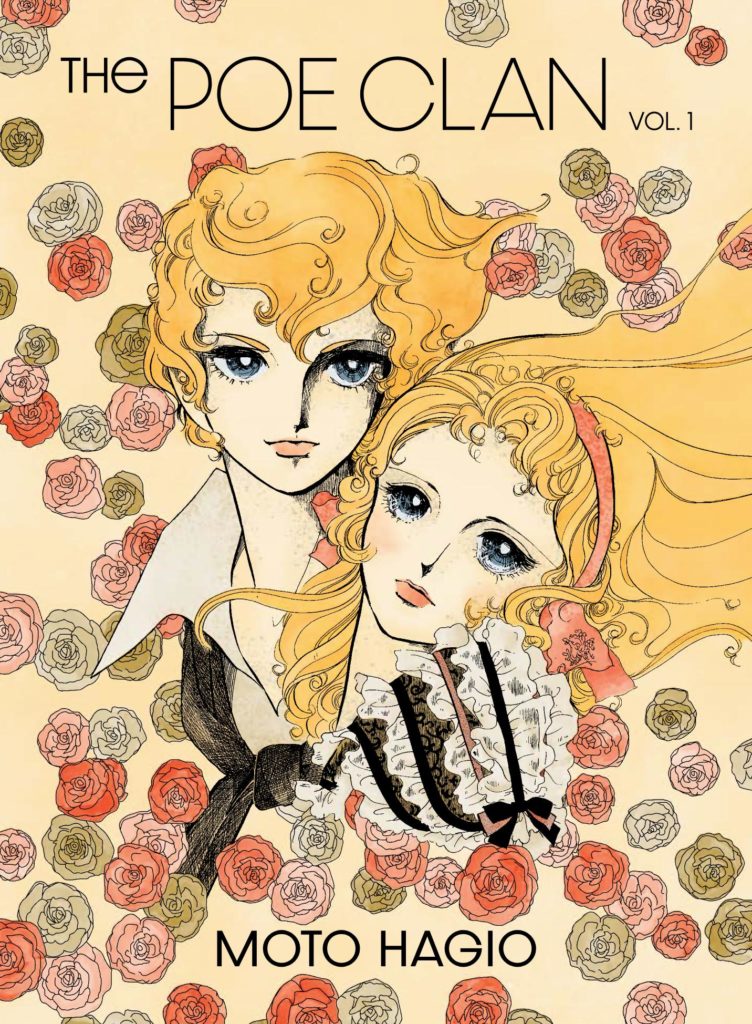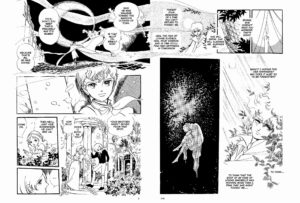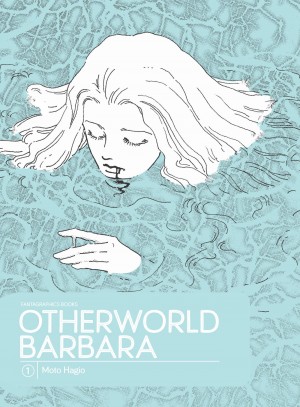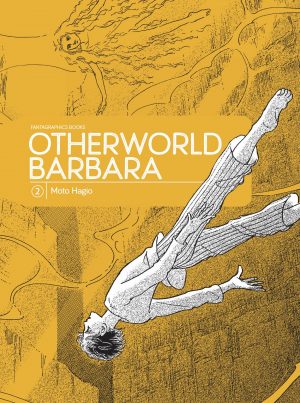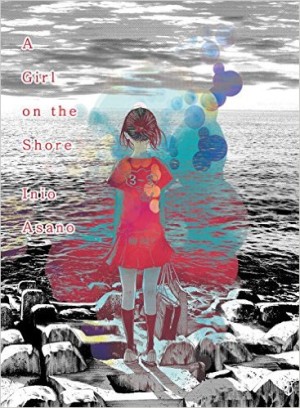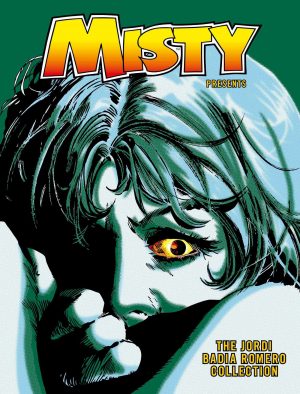Review by Frank Plowright
The Poe Clan is a generational saga starting in the 1830s and moving back and forth through time, a gothic romance in the best sense of the term, sprawling and captivating, at first focusing on Edgar and Marybelle, doomed to eternal life as teenagers. It opens when a new family move to an English town in the 1830s. Fourteen year old Charles Glensmith is immediately intoxicated with Marybelle, but the family rapidly moves away again. Thirty years later he sees her again briefly, still a child, and shortly thereafter he becomes separated from his companions and lurches through fog to the village of Poe where tragedy occurs. This however, is just the prologue.
Originally serialised between 1972 and 1976 in Japan, The Poe Clan is among works by Moto Hagio and contemporaries that created a new sub-genre of manga aimed at girls, exploring psychological concerns amid a cultivated melodrama. The recollections of the romantic Glensmith are given a poetic touch, while her art is equally articulate. Establishing roses as an essential story point enables their frequent use in baroque portraits, flowing into panels with borders read from right to left in Japanese style. There’s a deliberate blurring of gender identity, little differentiating the facial features of young boys and young girls, and Hagio endows everything she draws with a classical elegance. This applies equally to the latter third of the book where the style changes completely to multiple panels on busy pages.
Hagio redefines vampires as “vampirnellas”, in the process removing some traditional vulnerabilities. There’s no requirement to bite a person to extract blood, life energy substituting, absorbed through the skin by touch, and although it takes an effort of will, they can be seen in mirrors. While aware of what marks them apart from humanity, the vampirnellas are no savage beasts, so transformations into bats don’t feature. Their use is a meditation on endless life, not the joy most would assume, and lacking a spiritual foundation.
Roughly two thirds of this hefty translation is occupied by Edgar and Marybelle’s story from their youngest days until 1959. Not opting for a linear unfurling increases the dramatic strength. An imposing Edgar and a sickly Marybelle are introduced in the 1800s, and learning much later of their earlier years adds a poignancy and understanding to their tragic youth. Circumstances dictate Edgar must be forever fourteen and Marybelle slightly older but seeming younger, masquerading as the children of a wealthy family. In 1959 Edgar attends a German boarding school, and that remains the location for the remainder of this opening half of The Poe Clan. To begin with, it’s a puzzling choice as while it prolongs the story and provides an enclosed setting for turmoil, why would someone choose to masquerade as something they’re not, even if perpetually trapped looking fourteen? There is a reason, and when revealed near the end it’s a very dark moment. That section really ups the idea of androgynous sexuality, with emotions in turmoil over several characters, and Edgar being a vampirnella almost irrelevant, and as such it completely changes the tone to something more traditional.
There’s no denying that in places Hagio resorts to melodrama, especially with the repeated Cock Robin theme during the boarding school sequence, but for the intended audience she also deals with conflicted emotions in a sophisticated manner. The Poe Clan is never predictable, that applied to an ending to this volume that’s just the halfway point.
